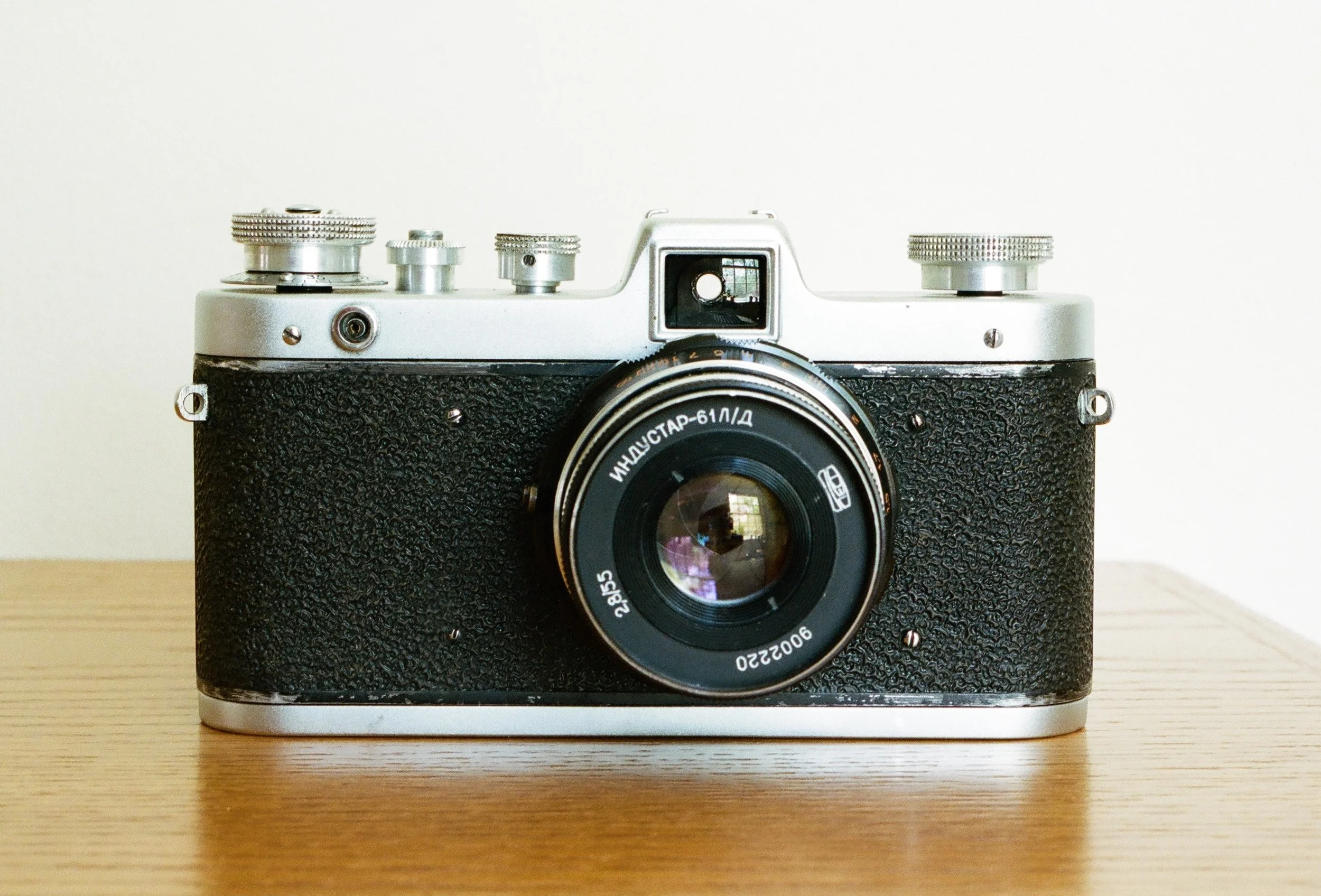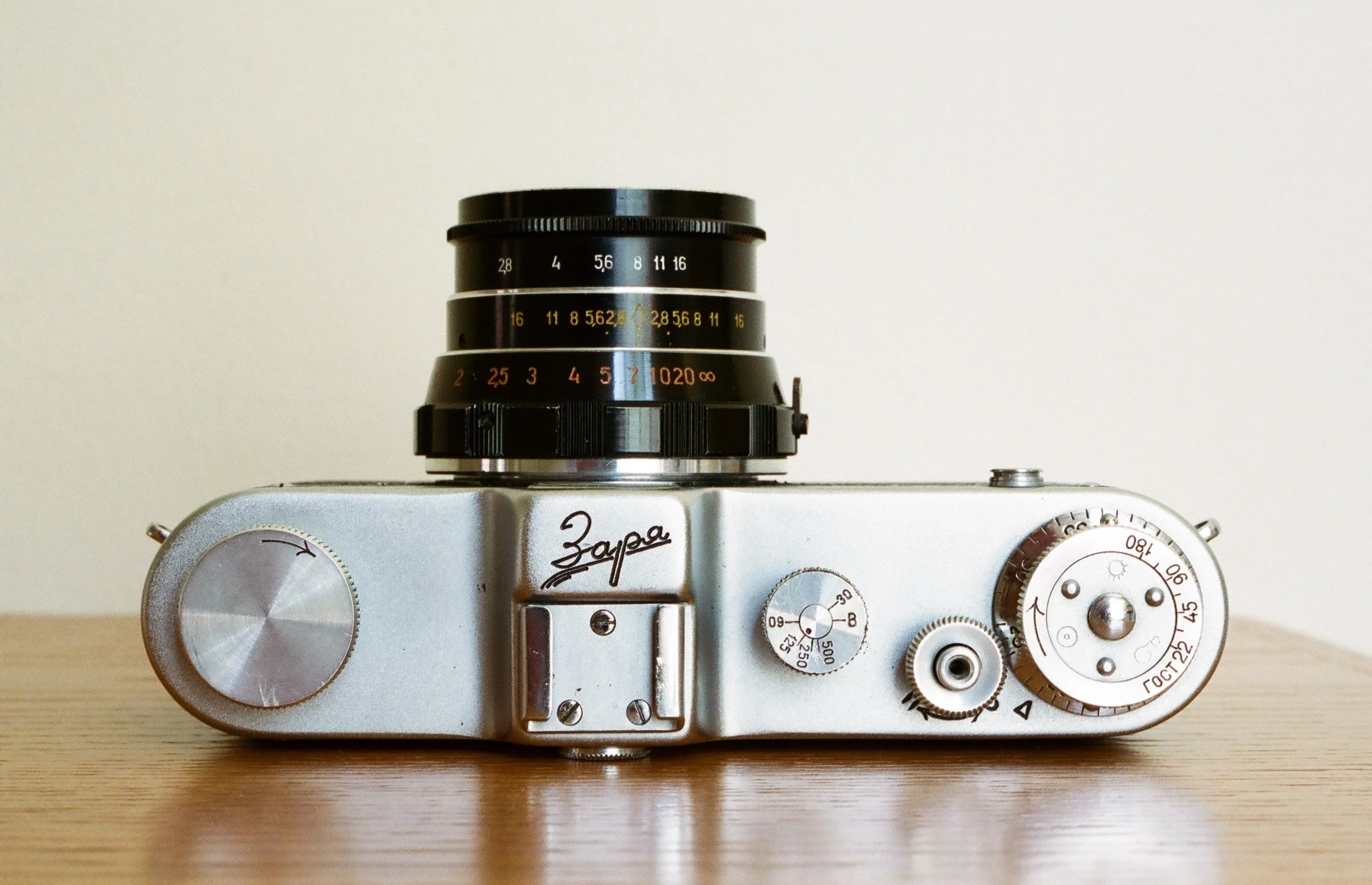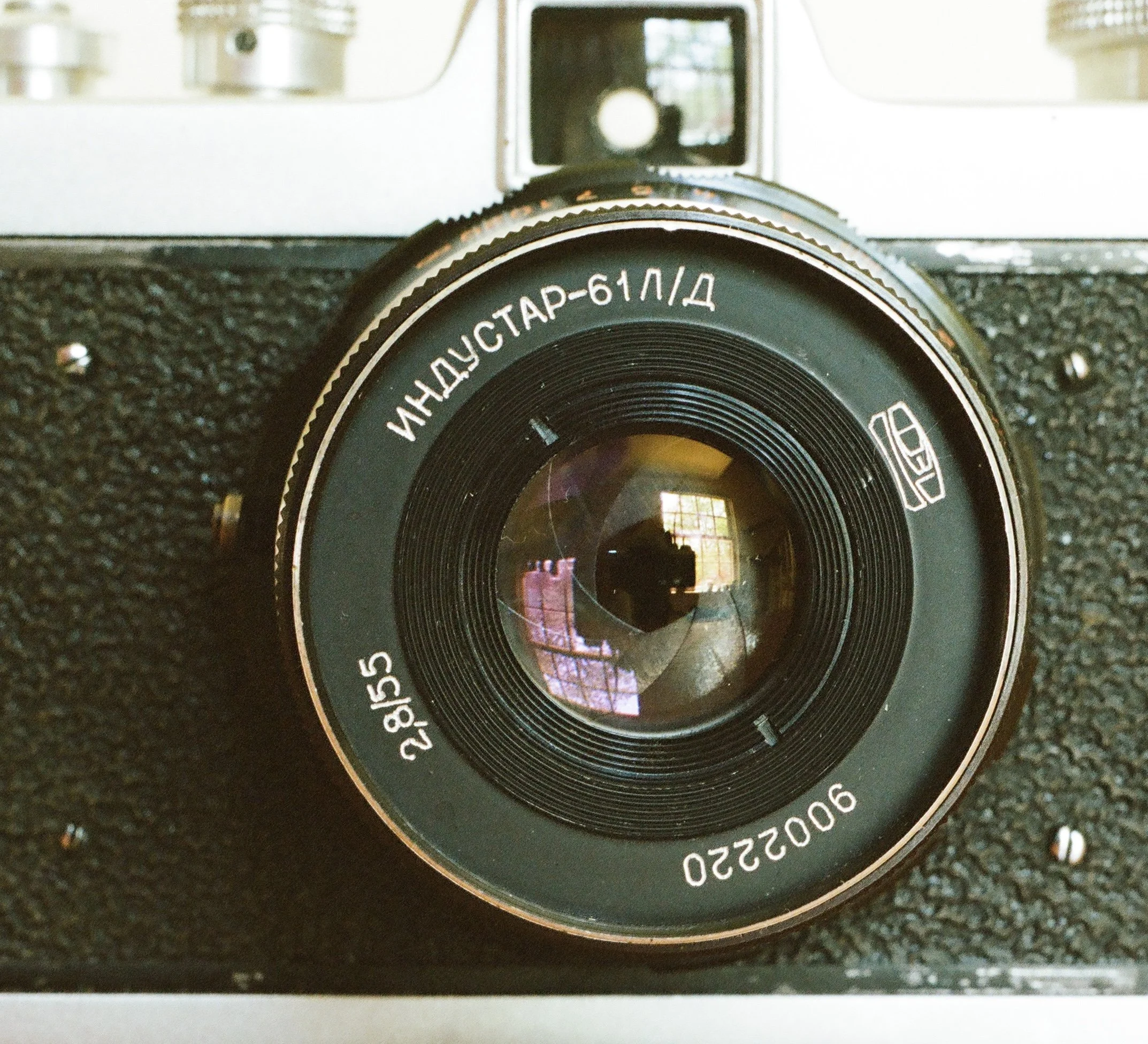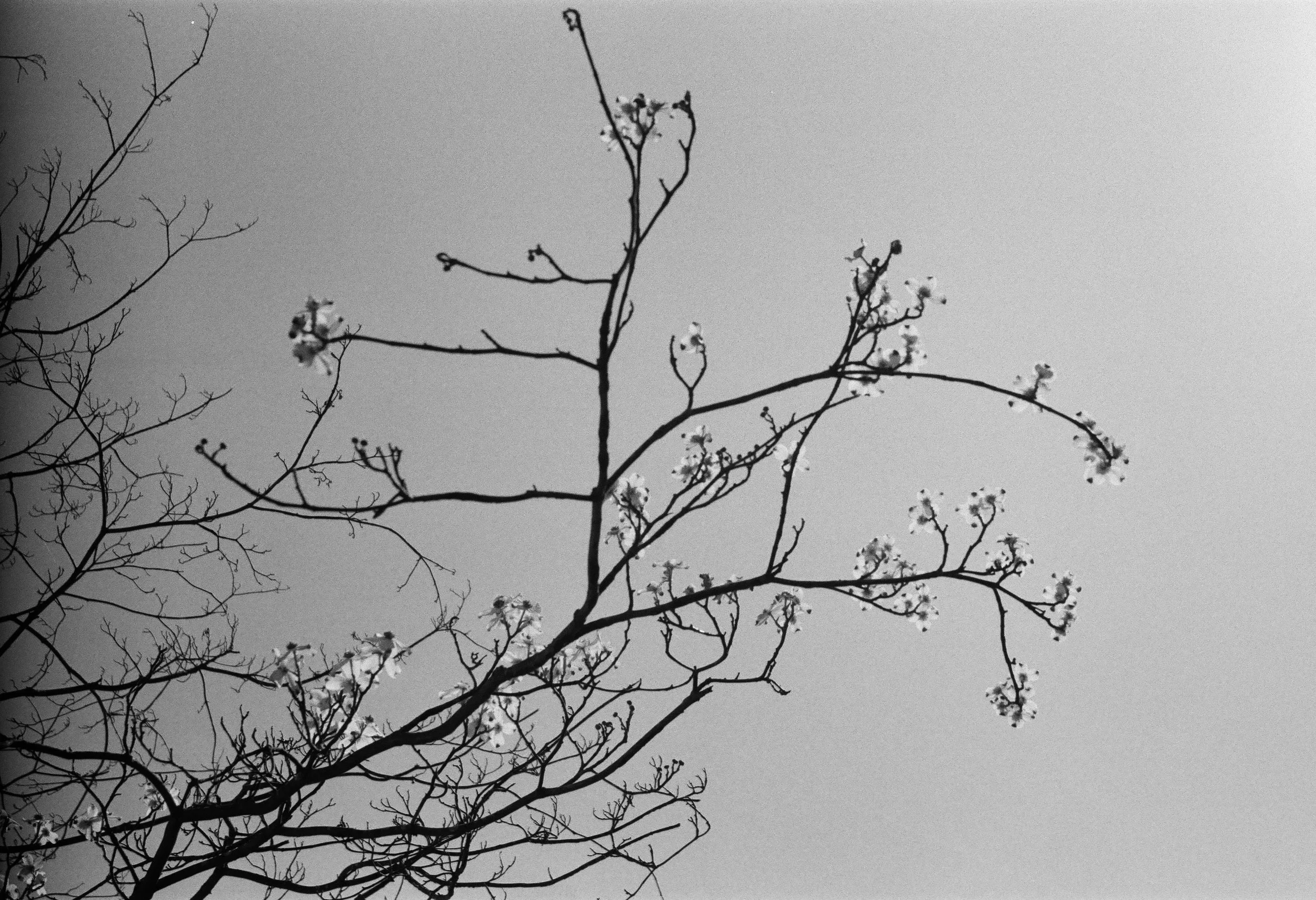Zarya (Заря)
Scale-focus, interchangeable lens camera made in Ukraine
Zarya (Заря) with 55mm f/2.8 Industar-61 L/D (Индустар-61Л/Д)
FED-1: the Zarya’s ancestor
In the Soviet Union, two years after the 1932 introduction of the Leica II, the FED facility in Kharkov, Ukraine (today, Kharkiv) began production of a Leica II replica, the FED-1. It was ‘the earliest successful Leica copy, and the only one achieving any measure of success before WWII’ (McKeown, 1996).
More than 700,000 were made over two periods: 1934 to 1941, and 1946-1955. The production gap was due to the war.
Arcade Building, Glen Echo Park Glen Echo, Md. Zarya, 55mm f/2.8 Industar-61 L/D, HP5+, 2025.
FED-2: the Zarya’s parent design
After prototype builds, production of a new model, the FED-2, began in 1955. It was in production until 1970 and nearly two million were made.
The design of the FED-2, like that of contemporary Nikon rangefinder cameras, was influenced by both the Leica and the Zeiss Ikon Contax. It had a Leica M39 (LTM) lens mount and a cloth shutter, and a Contax-type body structure with a removable back and a two-key closure.
Zarya with 55mm f/2.8 Industar-61 L/D.
Dawn
Zarya (Заря) means ‘Dawn’ in Ukrainian and Russian. It was a FED-2 variant with the rangefinder and self-timer omitted to reduce cost. Prototyping was done c. 1958 and production was from 1959 to 1961. The short production run suggests a lack of market success.
The Zarya was a USSR domestic market model. ‘As a result it was, for a long time, unknown in the West’ (Princelle, 1995). McKeown (1996) describes the Zarya as ‘uncommon’.
Porsche 911 Bethesda, Md. Zarya, 55mm f/2.8 Industar-61 L/D, HP5+, 2025. I used another camera to measure the range.
Zarya design
The Zarya is a viewfinder camera (no rangefinder) with interchangeable lenses. That’s unusual; viewfinder cameras are economy models and therefore they generally have fixed lenses.
However, the Zarya was not designed from scratch. It was developed from the FED-2 which had interchangeable lenses. If the design had been done from a clean sheet, I imagine a fixed lens would have been fitted. But the reason for using a parent design is to minimize the work required for design, tooling, etc. Restricting design changes serves that objective.
The Zarya has a clean look. Labelling is in Cyrillic. Заря (Zarya) is in stylish cursive on the top, with ФЭД (FED) on the back, and Индустар 61Л/Д (Industar 61 L/D) on the lens. It’s my only camera with no Roman alphabet labelling. Even the Shanghai-made Seagull (海鸥), whose face plate is in Chinese characters, has other inscriptions in the Roman alphabet.
55mm f/2.8 Industar-61 L/D
The Zarya in use
This is my newest camera and I have put only one roll of film through it so far, but I am delighted with the results. Handling and ergonomics are excellent, the viewfinder is large and bright, and the camera’s construction is solid. It’s a nice camera!
Spring blossoms. Bethesda, Md. Zarya, 55mm f/2.8 Industar-61 L/D, HP5+, 2025.
References / further reading
Camera manual: orphancameras.com When I last checked (6/4/25) there wasn’t a Zarya manual, but there was one for the FED-2. That can serve, since the Zarya is a FED-2 derivative without the rangefinder and self-timer.
More references:
Gustavson, T. 2011. 500 Cameras: 170 Years of Photographic Innovation. New York: Fall River Press. The 500 cameras are from the George Eastman House Technology Collection, Rochester, N.Y. The FED-1 is on p. 243.
McKeown, J.M. and J.C. 1996. McKeown’s Price Guide to Antique and Classic Cameras, 1997-1998. Grantsburg, Wis.: Centennial Photo.
Princelle, J. L. 1995. The Authentic Guide to Russian and Soviet Cameras. St. Helier, Jersay, Channel Islands: Hove Foto Books.
Glen Echo Park, Arcade building. Glen Echo, Md. Zarya, 55mm f/2.8 Industar-61 L/D, Tri-X, 2025.






